Excerpts from Jim Conrad's
Naturalist Newsletter
entry dated December 1, 2022, issued from near Tequisquiapan, elevation about 1,900m (6200 ft), Querétaro state, MÉXICO
SECHIOPSIS TRIQUETRA
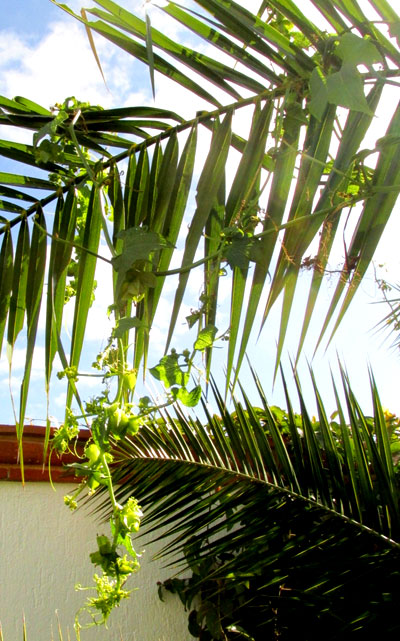
In the courtyard of a little village the above weedy vine dangled from the spreading fronds of an ornamental Canary Island Date Palm, about 3m up (10ft). The base of the vine had been cut a couple of weeks earlier, so it's interesting that the stem tips appeared to be flourishing still, even flowering and fruiting.
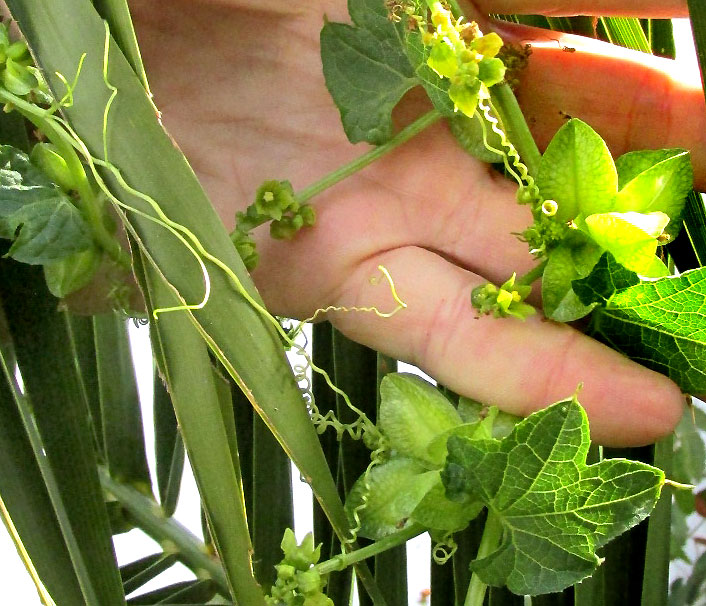
Up close the leaves' shallowly three- or five-lobed shape can be seen, and the slender, branching tendrils. Small clusters of male flowers atop long peduncles mingle with immature fruits. Here's a male flower up close:
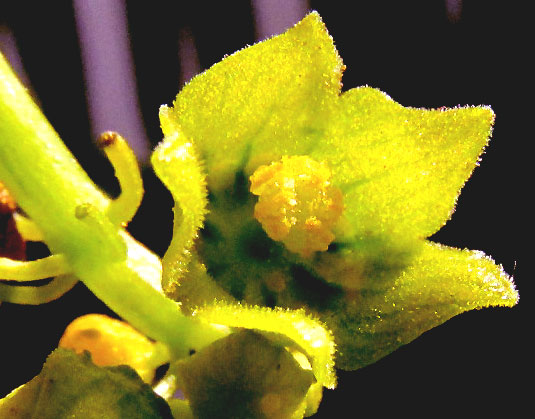
Pollen grains can be seen adhering to anthers, which are clustered into a head. Short hairs are nicely visible on the yellowish corolla, at least along the rims. The immature fruits are very distinctive:
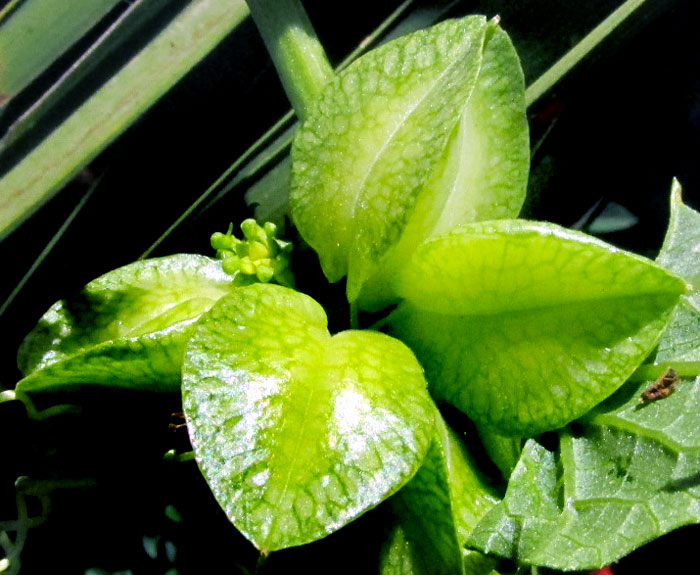
The fruits look like capsules produced by wild yams but they're not capsules, which split open. These samara-type fruits' three narrow wings are solid and firmly attached to the single seeds. In this village the species is fairly common, mostly seen climbing the stone walls around most properties. Nowadays the wall-climbing ones are all dried up (ours apparently having benefited from watering) and the dried samaras display interesting venation:
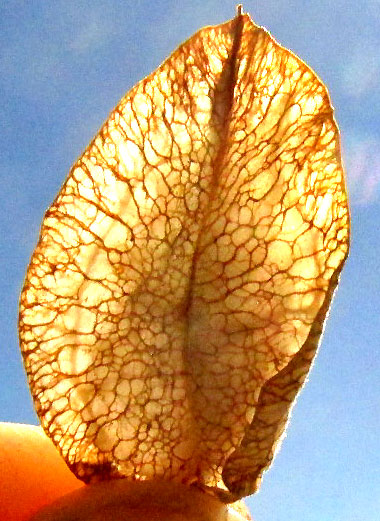
Picking off the wings piece by piece reveals this odd-looking seed:

Who would have thought that a vine with fruits like this could belong to the Gourd/Cucumber/Squash Family, the Cucurbitaceae? This species shows that the Gourd Family is extraordinarily diverse, and that its species' fruits aren't always squash- or gourdlike. Our vine is SECHIOPSIS TRIQUETRA, with no English name and endemic just to southwestern Mexico and eastward about to our location in Querétaro. In fact, the 2001 Flora del Bajío doesn't record this species for Querétaro, so maybe Sechiopsis triquetra is expanding eastward in central Mexico.
Sechiopsis triquetra is an upland plant, mainly found between 700-2000m (2300-7000ft). It occurs not only in weedy, disturbed environments but also in tropical deciduous forests and subtropical scrub. Mexicans are likely to call it chayotillo, or "little chayote," which is a wonderfully edible squash, but our plant's fruit definitely isn't eaten by humans. Where the vine is very common, it's eaten by browsing livestock.
from the December 31, 2017 Newsletter, with notes taken in mid October near Tepotzlán, Morelos state, MÉXICO
Elevation about 5315 ft (1620m), at 18°59′07″N 99°05′59″W
SECHIOPSIS TRIQUETRA GONE WILD
During my mid-October visit with a gardening friend in Morelos State, in the high-elevation volcanic belt just south of Mexico City, a certain vine caught my attention. It grew rampantly over my friend's brush piles, and regularly had to be pulled off ornamental evergreens, or they'd cover the trees completely, blocking off sunlight, and kill them. Below, you can see one of the vines just beginning its attack on an ornamental:
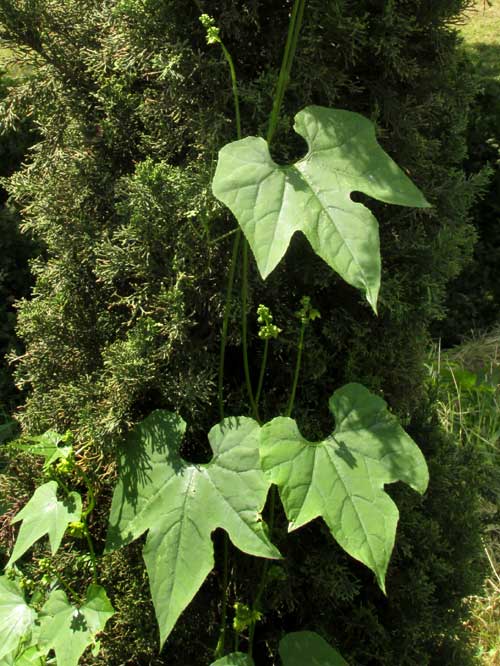
With its viny habit and large, soft, hairy, deeply lobed leaves, it looked like a member of the Squash/Gourd/Cucumber Family, the Cucurbitaceae. The flowers' corollas were fleshy and yellowish, typical of the Cucumber Family, but their small size and arrangement at the tips of long peduncles was a bit unusual for that family. Even more peculiar were the flowers' bases, each blossom equipped with ten bulging glands forming a kind of knobby crown atop the dangling flowers, as shown below:
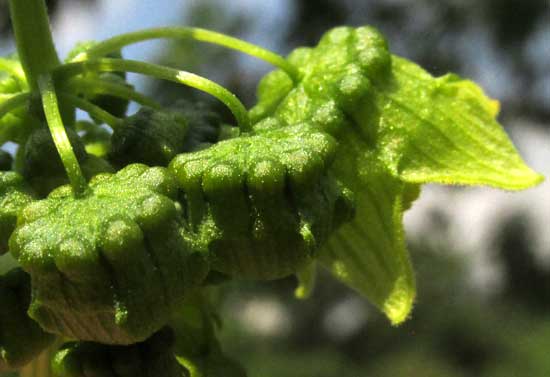
A close-up of a male flower shows the typical cucurbitaeous feature of the stamens' filaments fused into a column, atop which the clustered anthers form a yellowish, globular mass, as shown below:
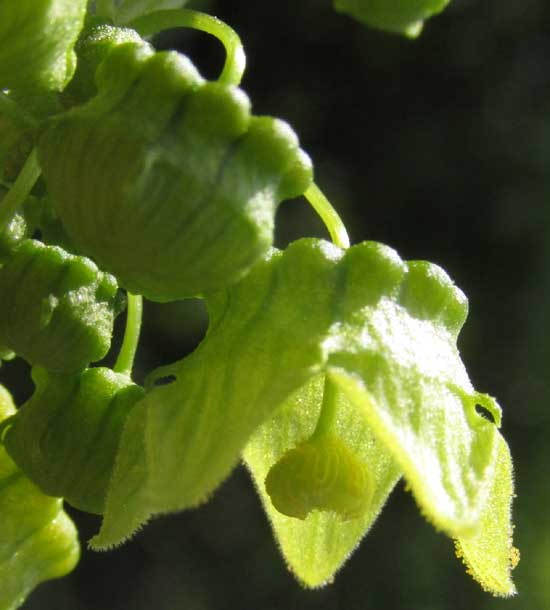
A frontal view into a male flower appears below:
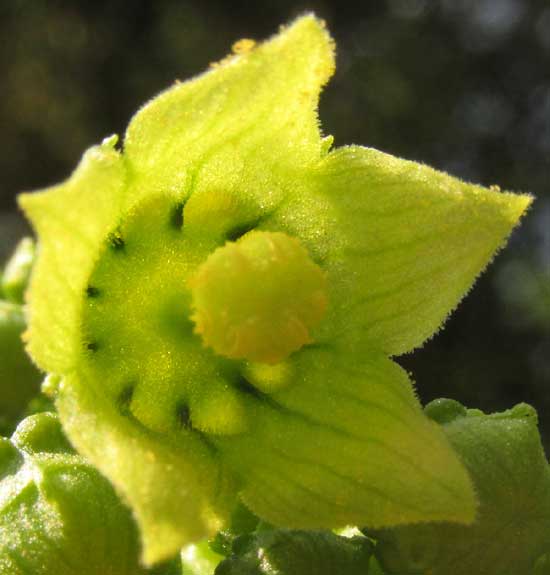
Despite the vines having completely covered certain areas of unused land I couldn't find female flowers. That's a shame if only because it's the female blossoms that produce fruits, and it's the fruits that this vine is known for.
Still, eventually the vine revealed itself as Sechiopsis triquetra.